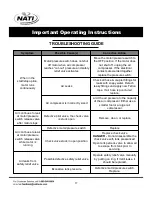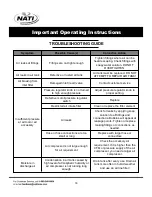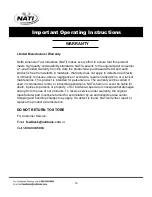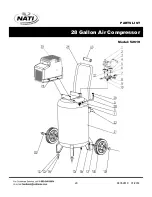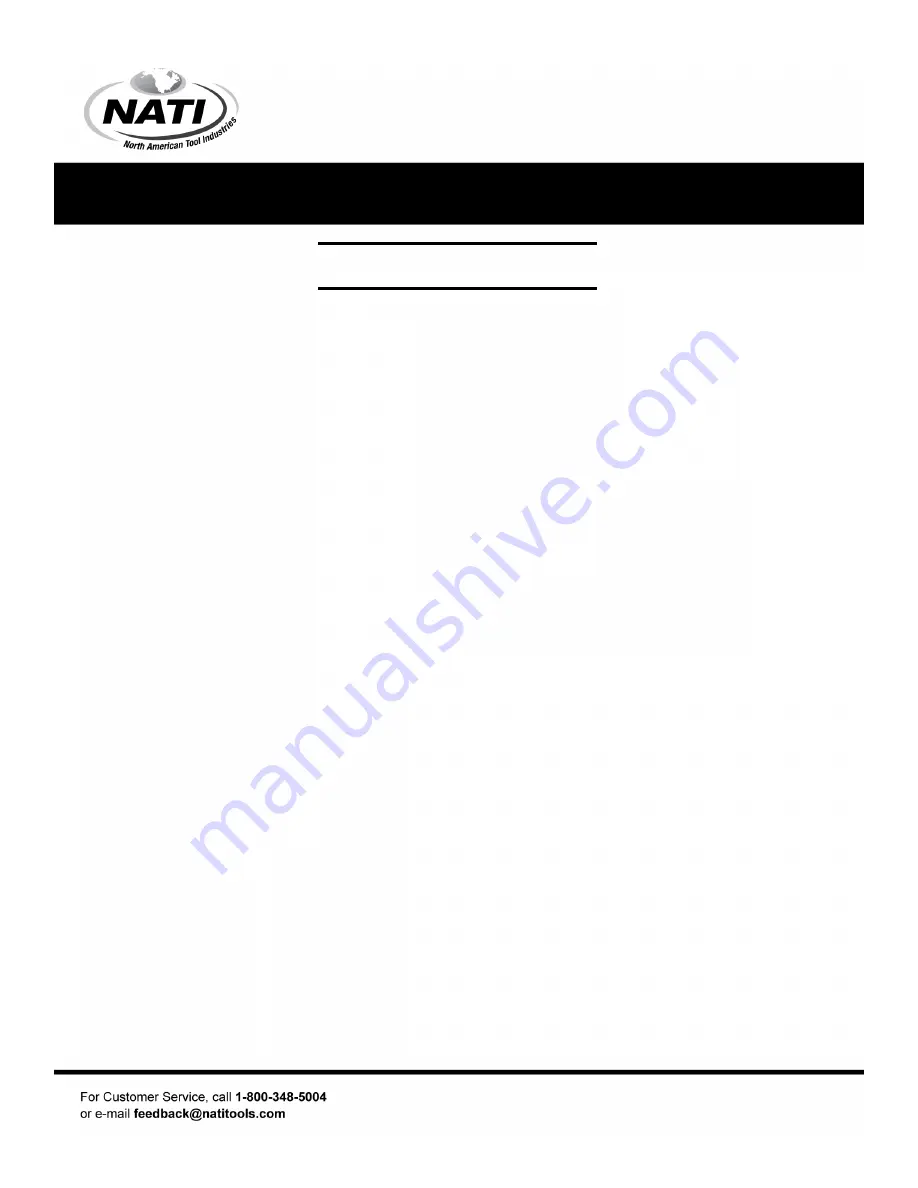
5
•
Operate the air compressor in a well-ventilated area. Do not direct paint or other spray
material towards the compressor. Read and follow all safety instructions for the material
you are spraying.
Risk of injury
•
Do not direct air stream at body. Use eye protection. Compressor starts automatically.
Do not touch moving parts. Keep guards in place. Compressor does not supply
breathable air.
Risk of bursting
•
Do not adjust regulator to result in output pressure greater than marked maximum
pressure of attachment. If a regulator has not been installed, use only attachment rated at
200 PSI or higher. Do not weld on or repair tank -
A DAMAGED TANK MUST BE
REPLACED IMMEDIATELY.
Do not operate without proper safety valve in place.
•
Never attempt to repair or make modifications to the tank or its attachments. Welding,
drilling, or any other modifications may weaken the tank, which may result in damage
from rupture or explosion. Never remove or attempt to adjust the pressure switch, safety
valve, or other components that control tank pressure. Never substitute parts or attempt
to alter the factory set operating pressures.
Risk of burns
•
Touching exposed metal such as the compressor head or exhaust tube can result in
serious burns. Keep
hands and fingers away from exposed metal parts on air compressor
during or immediately after operation. Air compressors generate significant heat during normal
operation and will remain hot for some time after use. Do not reach around protective shrouds or
attempt any maintenance until compressor has been allowed to cool.
Risk of flying objects
• Do not direct compressed air stream at people or pets. The powerful compressed air stream can
damage exposed skin and easily propel loose dirt and other small objects at high-speed, resulting
in serious injury. Always wear eye protection that meets ANSI Z28.1 specifications. Use only
OSHA approved air blowguns. Never leave a pressurized air compressor unattended. Shut OFF
air compressor and relieve pressure before performing maintenance or repairs. Do not move the
air compressor while the air tank is pressurized. Never attempt to move the air compressor by
pulling on the air hose.
Important Operating Instructions
GENERAL SAFETY INSTRUCTIONS

















